April 11, 2023
Q/A #71 - Nepenthes Aren't Producing Pitchers
QUESTION:
I included a few pictures of some Nepenthes that are all growing very well, but not pitchering. The first is a Nepenthes ventrata that is growing next to a Miranda. The Miranda is doing extremely well, but the ventrata isn't even producing small pitchers. They both receive a fair amount of sun during the day, mostly in the morning though, and I mist and water them every other day or so. Could it be that the ventrata is just too big? If so, I wonder how to cut it back.
The second is a small N. ventricosa x hamata in a small walk in greenhouse next to a N. spectabilis x aristolochioides, which is doing fantastic! But the hamata x ventricosa threw out this one derpy pitcher and is barely doing anything. I repotted it recently with fresh medium as well. I know one reason pitchers don't pitcher is because of light, but, those two get a good amount of light and there are other neps under the same light that are doing VERY well. All of these plants receive ZeroWater.
(Submitted in April 2020.)
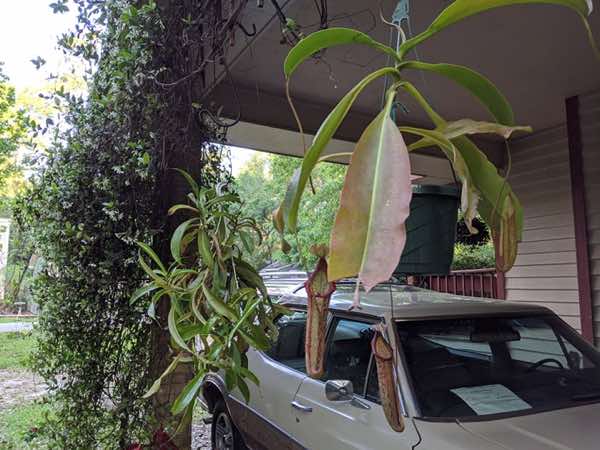
Nepenthes Miranda (right) and Nepenthes ventrata (left)
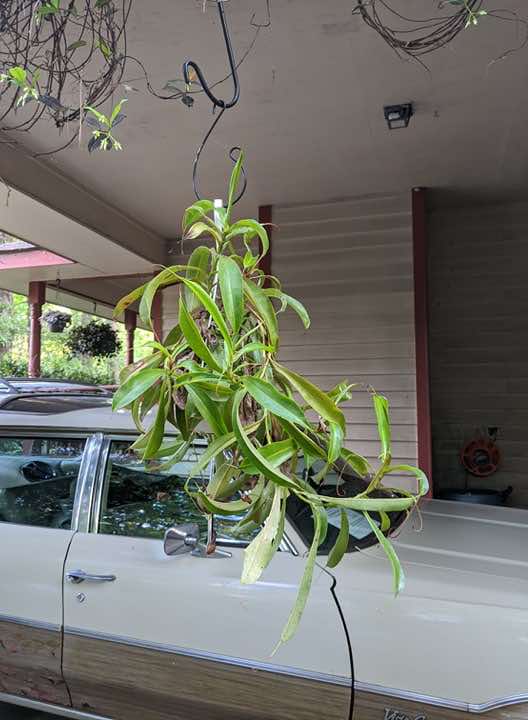
Nepenthes ventrata
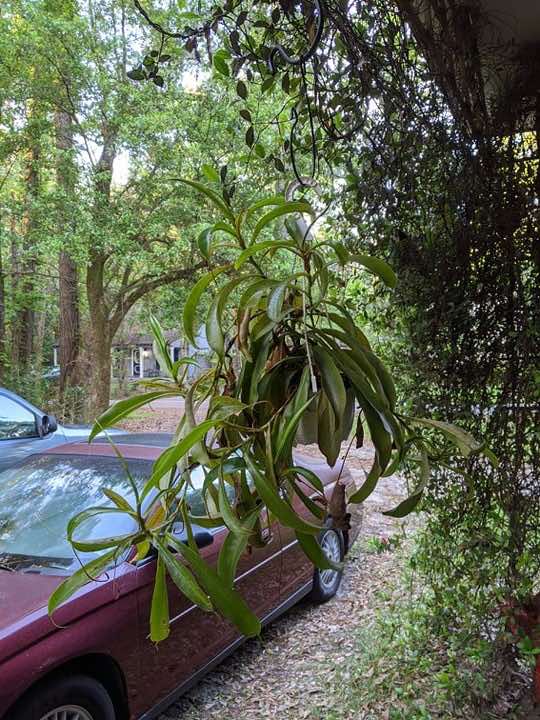
Nepenthes ventrata
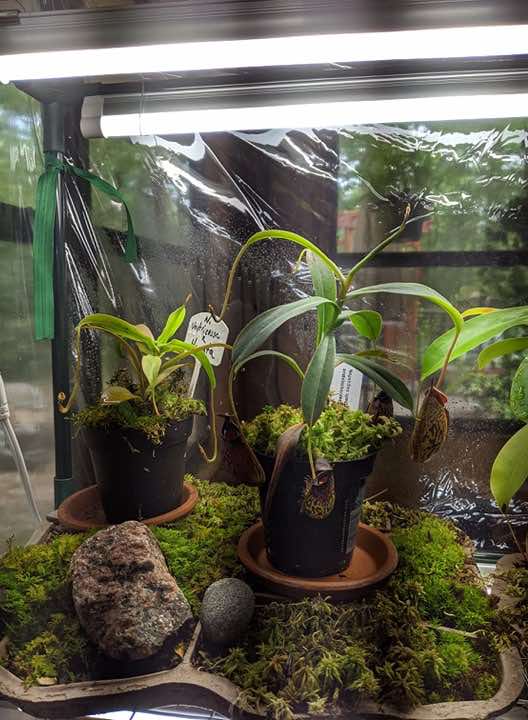
N. ventricosa x hamata (left) and N. spectabilis x aristolochioides (right)
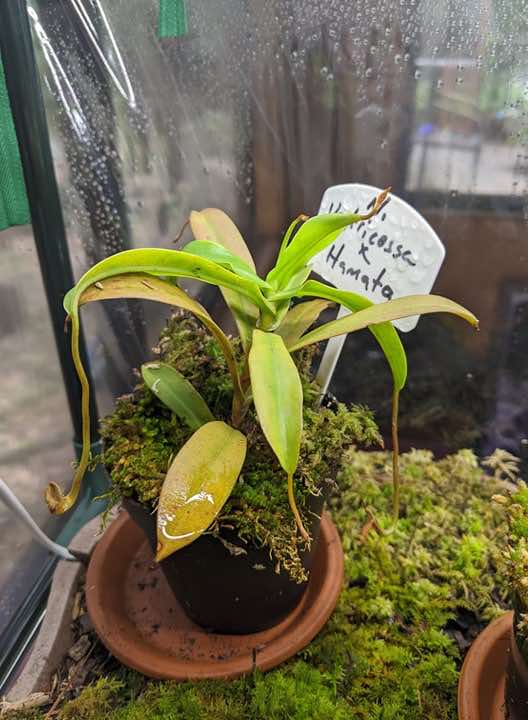
N. ventricosa x hamata
RESPONSE BY JEFF DALLAS:
In studying those Nepenthes photos, I would say that the plants in the carport may not be getting quite as much sun as it may appear. My clue to that is the color of the Miranda. Even though it is pitching, Miranda usually gets quite red when it's in the kind of sun it likes. Ventratas need about 3-4 hours of direct sun to pitcher or intermittent direct sun throughout the day. See if you can move them to a slightly sunnier spot.
Your N. x ventrata is very big; you can cut it back some if you desire, and it could help trigger pitchering. Just cut some vines off where it seems to make sense to reduce the size. You can easily root the cuttings to get more plants.
N. hamata x ventricosa can be very slow to pitcher. One thing that can help may be tough to do in this environment but is to provide a drop in night temperature. Also, what kind of lights are those? If they are LED that could also be part of the issue. High elevation plants like hamata like stronger UV light, and LED lights have none. The only thing you can do is see if there's a way to direct some natural sun in there, or switch to T8 fluorescent lights. I don't recommend T5's in this environment since they would build up too much heat.
RESPONSE BY ORIGINAL POSTER (6 WEEKS LATER):
I wanted to thank you for pointing out that some of these plants need UV light and LEDs don't provide that. I was completely ignorant of that fact and it never even occurred to me. In this past month, I've installed 18-inch T8 fluorescent lights in my little greenhouse above all my plants and the ones that were doing well are doing better, and the ones that weren't pitchering are now doing so. My N. ventricosa x hamata is now throwing TWO pitchers at once and growing nice and fast and my N. singalana already had two pitchers, but is now throwing two more at once as well, and they're bigger. I have an N. ampullaria x aristolochioides that finally threw out a small but nice pitcher since then too! And oh man, my N. spathulata x spectabilis is looking.... spectabilis!
So thanks for that very crucial bit of info. I do pass these things on to friends of mine who show interest in carnivorous plants and general gardening as well.
• The original question and response have been edited for publication.
• With a database of thousands of questions, we will post a Q&A every few days or so.
• To search for similar posts, click on a hashtag below or use the site's search function.
• To submit a carnivorous plant question, visit Ask the Growers.

